My Personal Search for Charles Dickens in Modern England
Part 3: Other Historical Sites in Rochester to Influence Dickens' Writing in Later Life
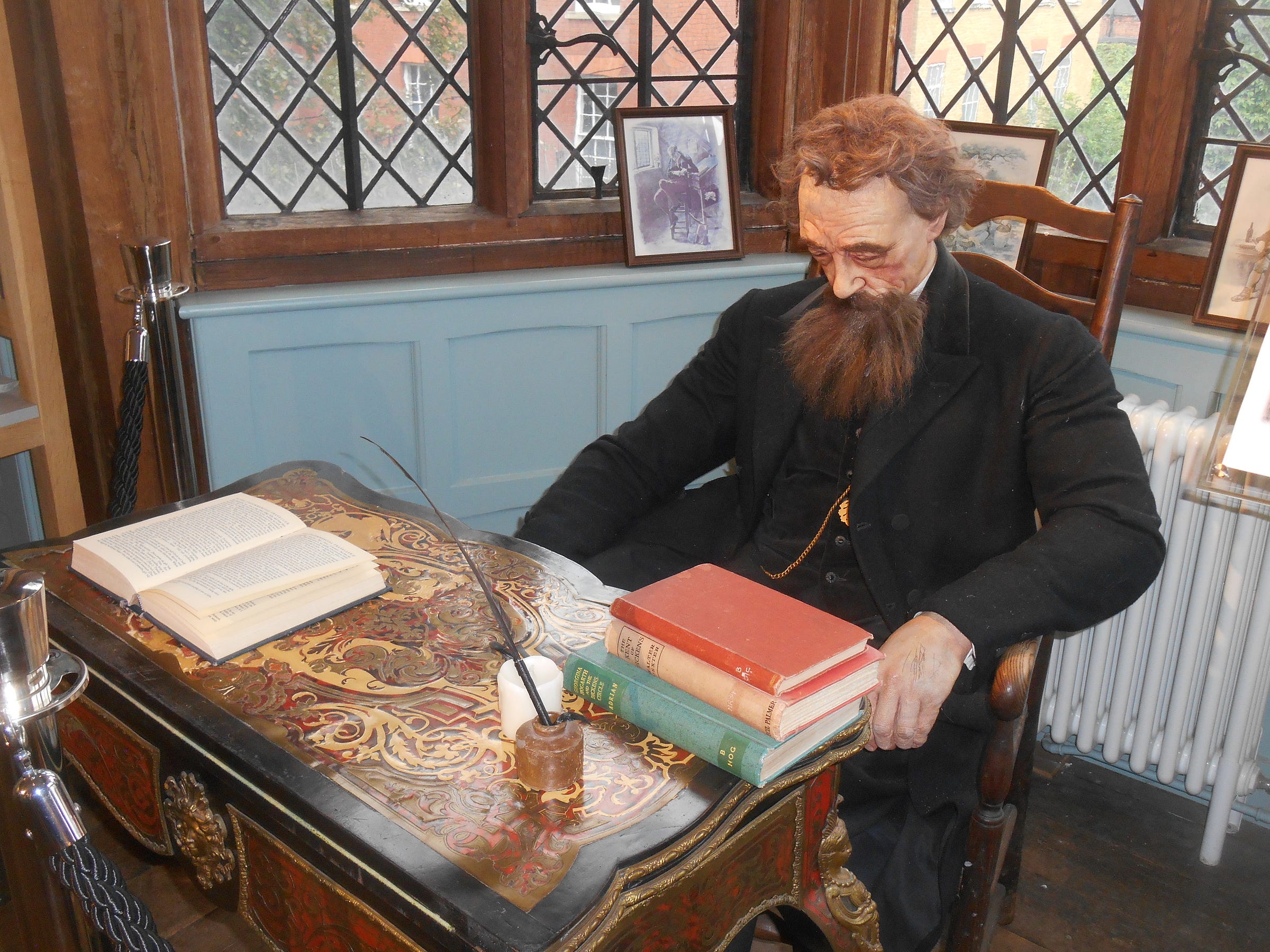
This article series about my personal interest in understanding the legacy of Charles Dickens and his presence in the United Kingdom concludes with Part 3 exploring some other sites in Rochester of influence to him. Click here to read Part 1 and Part 2, respectively.
Rochester Castle
Immediately beside Rochester Cathedral is the impressive view of Rochester Castle positioned along the Medway River that serves as a major access point to Rochester and other municipalities in Kent. Located at Castle Hill, Rochester, Kent ME1 1SW, this fortress was commissioned by Bishop Gundulf in 1087 following the Norman conquest of England and was the tallest building in Europe at the time. It also faced a number of battles in its history, most notably a two-month long siege led by King John in 1215.

Unfortunately, because of bad weather and lack of time in the day, Dan and I decided not to explore Rochester Castle in full detail. However, this historical attraction is one that remains popular among visitors of Rochester, so perhaps on a future visit I may decide to take a closer look.
Rochester Guildhall Museum
Following our visit to Rochester Cathedral, Dan and I paid a visit to Rochester Guildhall Museum, located at 17 High St., Rochester, Kent ME1 1PY, and open every Tuesday to Saturday from 10:00 am to 5:00 pm. Rochester Guildhall was purpose built in 1687 as a courtroom and council chamber, which was referenced by Charles Dickens in his 1860 classic novel Great Expectations, a story widely regarded by scholars as his most autobiographical one from the perspective of the protagonist named Pip. The council chamber served as the administrative centre for the City of Rochester until 1974. The museum itself was actually founded in 1897 to commemorate Queen Victoria’s Diamond Jubilee and was first located in Eastgate House further down on High St. before it was eventually moved into Rochester Guildhall in 1979.
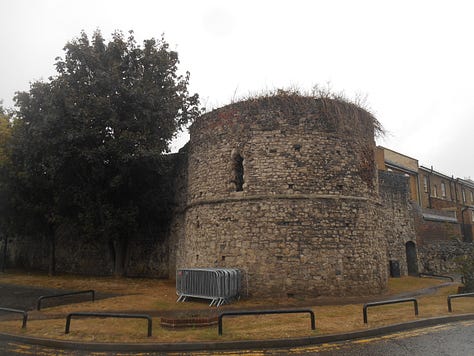
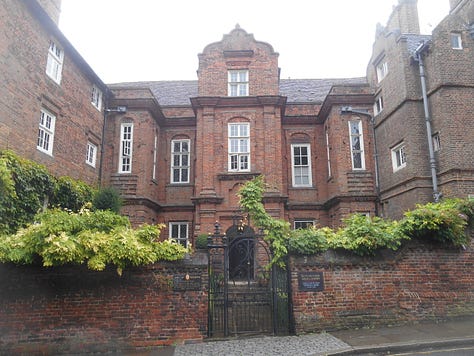
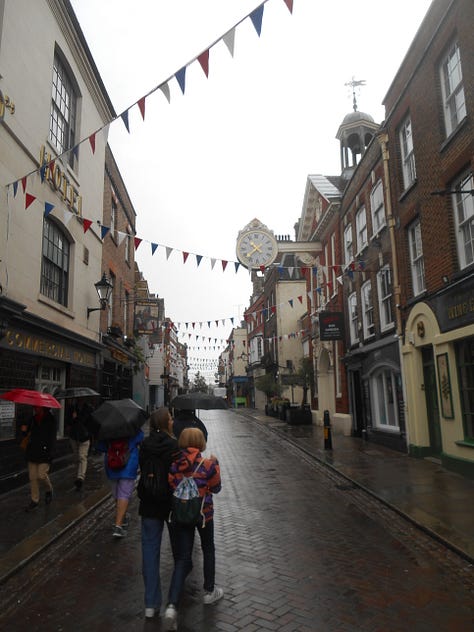
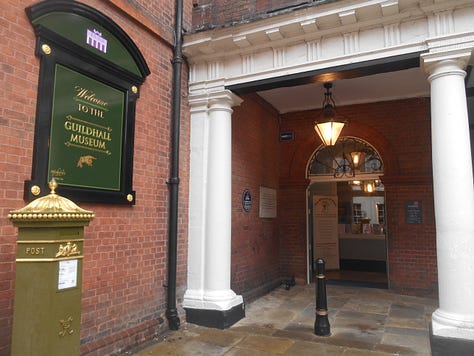

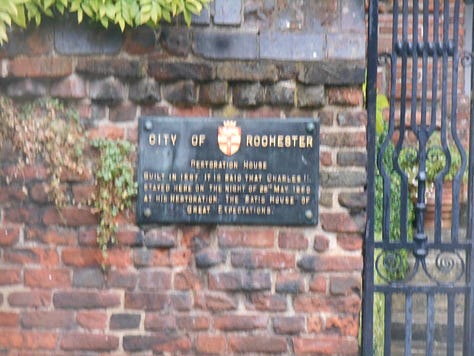
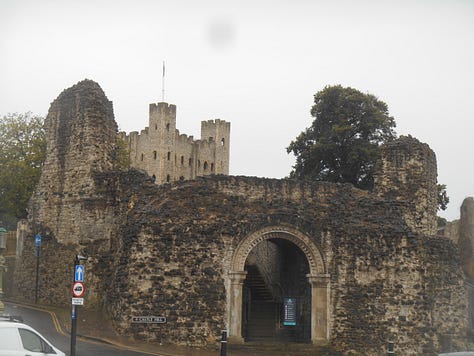
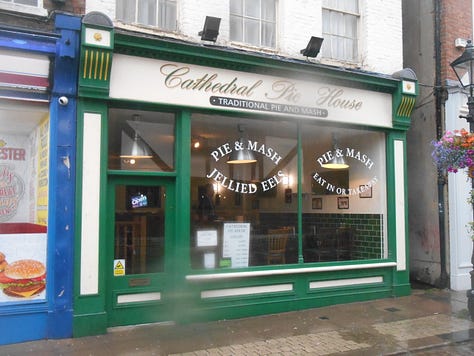

The Rochester Guildhall Museum is home to all matter of local historical artifacts concerning Rochester and the surrounding Medway area, including a 200,000 year old axe found nearby that visitors are allowed to touch. Among its exhibits is also the recently created permanent gallery called The Making of Mr. Dickens that was officially opened by Her Royal Highness the Duchess of Cornwall. In addition, this museum’s council chamber is often booked for weddings and other special events.
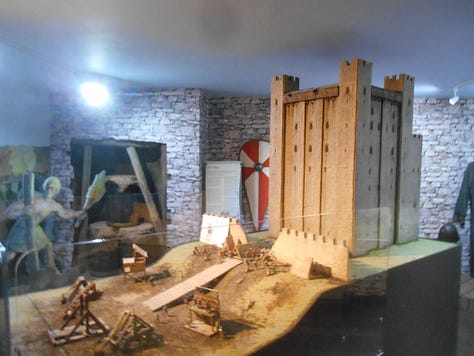
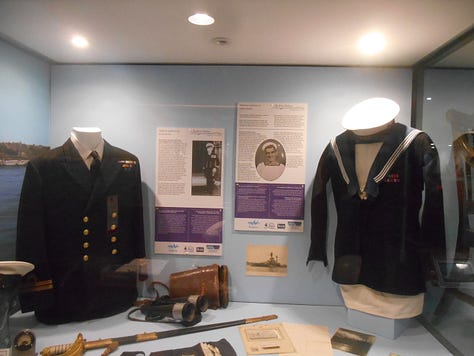
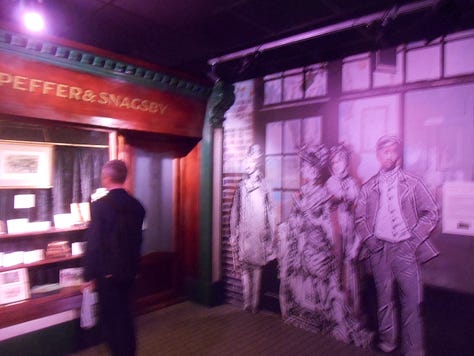
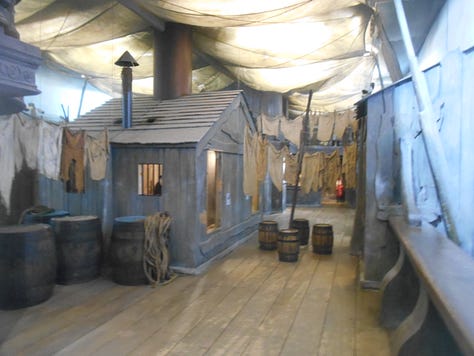
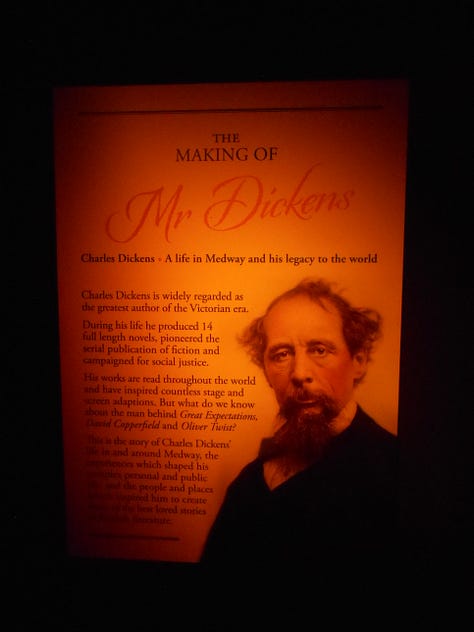

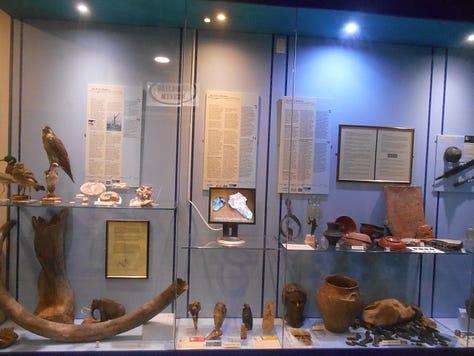
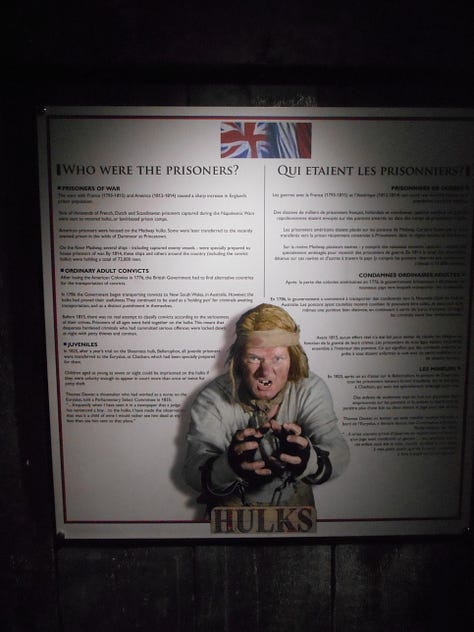

Eastgate House and the Swiss Chalet from Gad’s Hill Place
Our final visit on this day trip to Rochester was to its local Charles Dickens museum called Eastgate House, located on High St., Rochester, Kent ME1 1EW. Originally the family home of Sir Peter Buck who served at the Royal Tudor Dockyard, this Grade I 16th and 17th century townhouse served multiple functions during its existence, such as a Victorian boarding school and hostel before becoming a museum dedicated to Dickens and his life in Rochester. It also serves as a host venue for wedding ceremonies.
Located in the gardens of Eastgate House is the historically significant Swiss Chalet that was gifted to Dickens by an actor friend named Charles Fechter when he lived at Gad’s Hill Place. It arrived at Higham Rail Station for later assembly in 58 boxes! Dickens wrote several of his later works in this small and charming building, including the unfinished novel The Mystery of Edwin Drood when he died in 1870. Following Dickens’ death, the building was first moved to Cobham, a village in Surrey southwest of London before it was eventually moved to the gardens of Eastgate House in 1960.
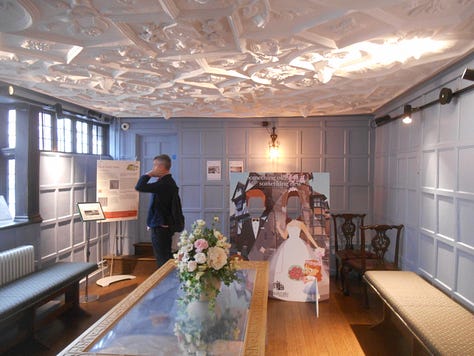
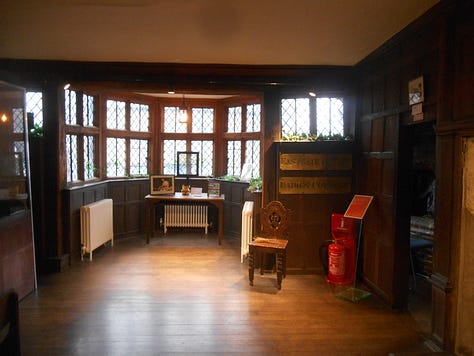
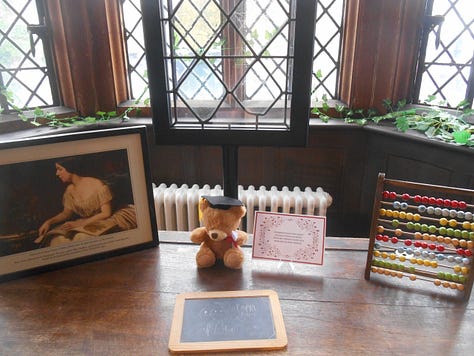

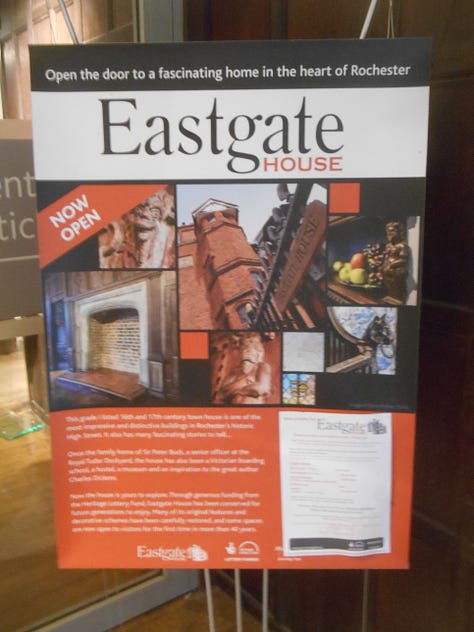

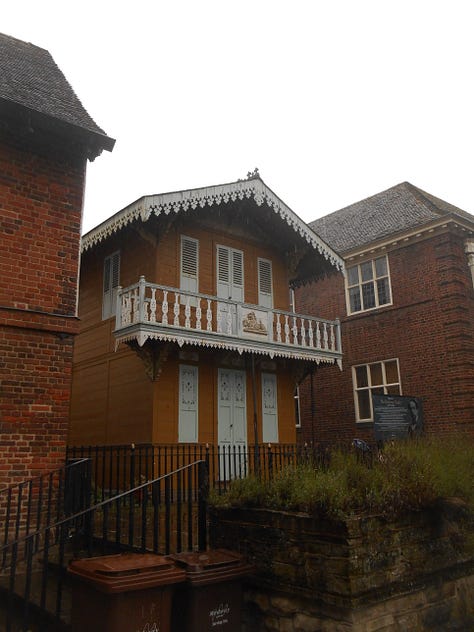
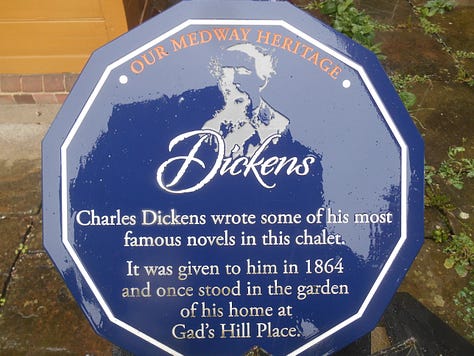
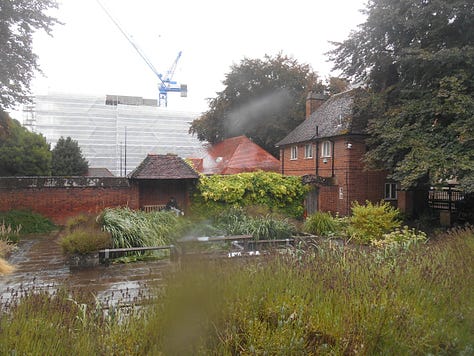
While the Swiss Chalet is currently not open to the public for safety reasons, there are long-term intentions to do extensive repairs on the building for its later use on special occasions.
Concluding Remarks
On the train ride back to London, Dan and I had a chance to reflect privately on the significance of seeing the places that inspired Charles Dickens to produce some of his finest writing that the world continues to appreciate every day. For myself, I gained a deep insight and newfound appreciation for his legacy and also some understanding as to why he wanted to live out the remainder of his life in Rochester.
What’s also clear to me is that people worldwide who have a passion for great literature will also want to take in a similar private tour as I did and conduct their own personal search for Charles Dickens in modern England. They can then see for themselves the local communities in London and Rochester that inspired Dickens to produce such phenomenal writings to awaken the public imagination of his countless readers and admirers—both during his lifetime and for several generations to come.




Hi. Please feel free to comment on this article anytime if you like what I've written or have anything constructive to add. Also, please take a moment to check out my "About" page and become a free subscriber to "Scientist World Traveller" if you haven't already done so. Thank you.